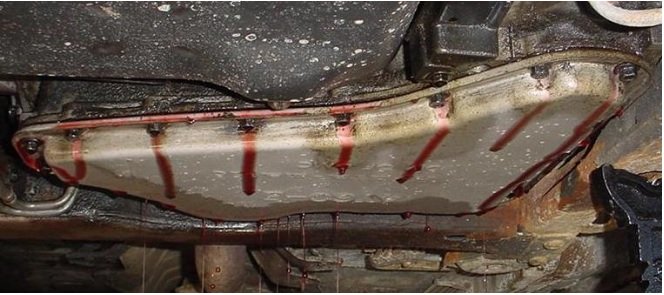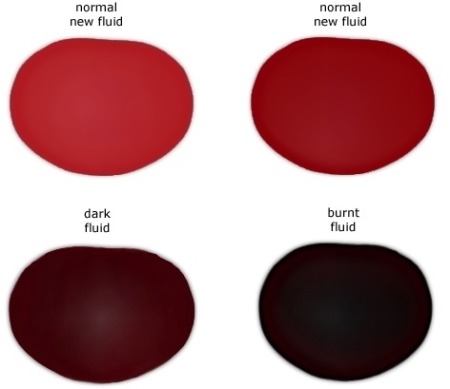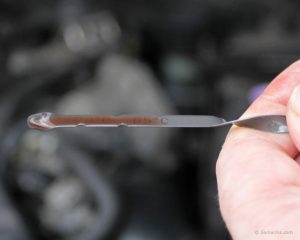In This Guide
- Symptoms to Watch for
- 8 Common Causes of Transmission Slipping
- How to Fix Transmission Slipping
- If All Else Fails
- How to Prevent Slipping
- What to Read Next
- Over to You
A transmission stays in a designated gear until a shift is performed by the driver (manual) or the computer (automatic). If yours is spontaneously slipping in and out of gear (or simply popping into neutral) while driving, I don’t need to tell you that this is a serious safety risk. When you step on the gas to take a turn or pass a car, you need power delivered to the wheels, end of story.
What Transmission Do I Have?

 Slipping doesn’t necessarily mean that your transmission is about to fail, but it is a signal that you should get it looked at by a repair shop. The clutch is most often the source of the problem for manual transmissions, while there are many different causes for automatics.
Slipping doesn’t necessarily mean that your transmission is about to fail, but it is a signal that you should get it looked at by a repair shop. The clutch is most often the source of the problem for manual transmissions, while there are many different causes for automatics.
If your car is showing one or more of the symptoms of slipping listed below, you should get it look at as soon as possible. Driving with a slipping transmission is not recommended. In addition to being unsafe, continuing to drive can turn what might currently be a small, easy to fix problem into a much bigger issue (or even transmission failure) that will cost significantly more to fix.
In this guide, we’re going to look at several factors can cause a transmission to slip, the symptoms to watch for and what you can do to solve the problem.
What Transmission Do I Have?
Symptoms to Watch for
Slipping occurs when the transmission tries to change gear, causing it either fall back into the gear that it was previously in, or drop into neutral. Diagnosing the issue can be challenging, but here are the common signs to look for:
Automatic Transmission
- Check Engine Light is on
- Transmission tries to upshift, then falls back into a lower gear
- Transmission refuses to upshift
- Transmission falls into a lower gear, causing the engine to run at a high RPM
- You step on the gas, engine RPMs increase, but the vehicle speed doesn’t
- Reverse won’t engage
- Strange or burning smell
- Unusual noises when shifting
- Hard/rough gear changes
Manual Transmission
- Transmission won’t go into gear
- Transmission inexplicably falls out of gear
- Unusual noises (like grinding) during gear change
8 Common Causes of Transmission Slipping
There are a number of possible causes, but if you can find and fix the source of the problem quickly, you can prevent it from doing further damage to the transmission.
1) Low Fluid Level
An automatic transmission relies on hydraulic pressure provided by transmission fluid to perform gear changes. If there isn’t enough fluid in the system, the transmission pump won’t be able to create enough pressure to engage the next gear. Low fluid levels may indicate a leak and can lead to overheating, and significant internal damage.
What to do: Check the Fluid Level
2) Transmission Fluid Leak
As we just explained, an automatic transmission requires hydraulic pressure to change gears. If yours is leaking, chances are there isn’t enough fluid to shift gears without difficulty.
Sometimes, the problem can be as simple as a bad transmission pan gasket, but it can also be faulty seals, ruptured fluid lines, a leak in the pan or a crack in the torque converter.

Check the fluid level and look at the underside of your car around the pan and on your drive for any sign of a leak.
What to do: Seal Leaks With Lucas Fluid
3) Burnt/Worn Out Fluid
Over time, the composition of fluid breaks down, causing it to become thinner, darker and full of contaminants. If it is too thin or burnt it will be ineffective at removing heat from the transmission and won’t be able to keep the bands and clutches properly cooled. This will cause it to overheat, preventing it from shifting gears in a normal manner.

What to do: Change the Fluid
4) Broken or Worn Out Transmission Bands
In an automatic vehicle, metal bands are used to link the gears together. If one of these transmission bands is worn or broken (often caused by overheating), that particular gear won’t be able to engage properly, causing it to ‘slip’.
What to do: Replace or adjust the band(s)
5) Clutch Problems
Manual Transmission
The clutch is the cause of slipping in manual transmissions 90% of the time (the other 10% can be attributed to leaks). A clutch disc typically lasts from 20,000 to 200,000 miles depending on your driving habits.
The clutch uses friction material (like a brake pad) to grab onto the engine flywheel and basically separate the engine from the transmission during a gear change. If the friction material or throw-out bearing (the metal bit that moves the clutch when you step on the pedal) is worn, you won’t be able to fully engage the clutch and shift gears.
What to do: Replace the clutch
Automatic Transmission
An automatic vehicle uses clutch plates inside both the transmission and the torque converter to engage the various gears. If the friction material on the plates is burnt or wears down, it might not be able to go into gear or smoothly shift gears and it may slip out of gear too.
What to do: Change the fluid and replace plates
6) Worn Out Gears
Worn gears can be caused by normal wear and tear (high mileage), ineffective fluid and overheating. Worn out gears don’t work together properly, and this can cause harsh gear engagement, slipping out of gear, failure to engage a gear, and lots of grinding and clunking.
What to do: Replace gear(s) or entire transmission
7) Solenoid Issue
Solenoids are tiny electrically activated valves that control the flow of fluid inside of a transmission. Controlling the hydraulic pressure is essential to actuating a gear change, so a faulty transmission solenoid can cause many problems, such as delayed shifts and failure to shift/engage a gear. If you’ve already checked the fluid level, then the solenoids should be your suspect. Use an OBD2 scanner to check for trouble codes and narrow down which solenoid is needs to be replaced.
What to do: Check & replace the solenoids
8) Torque Converter Issue
A torque converter is a hydraulic circuit that transfers engine power to the transmission through hydraulic pressure. If it is damaged, there won’t be enough pressure to operate the valve body and change/engage gears. A bad torque converter can also cause the engine to stall or slip out of the overdrive gear.
What to do: Check & replace the torque converter
How to Fix Transmission Slipping
If the slipping is being caused by ineffective fluid or low fluid level due to a leak, then you may be able to fix the problem yourself by checking and changing the fluid or by repairing/plugging the leak.
Fixing more serious problems such as worn or broken bands, clutches and gears require removing and taking apart the transmission. These procedures should only be attempted by those with significant auto repair experience.
Torque converter and solenoid replacements should be left to professionals.
Low Fluid Level – Check and Top-Off
 One of the easiest ways to prevent problems is to regularly monitor your fluid level. Once a month (every two weeks if you drive a lot), open the hood, locate the transmission dipstick, and check the ATF level. Always do this with the engine running, because the internal pump has to be running in order to get an accurate reading.
One of the easiest ways to prevent problems is to regularly monitor your fluid level. Once a month (every two weeks if you drive a lot), open the hood, locate the transmission dipstick, and check the ATF level. Always do this with the engine running, because the internal pump has to be running in order to get an accurate reading.
If the fluid appears dark, unusually thin, dirty, or has a burnt smell, have it changed immediately. If the it is below the optimum level indicated on the dipstick, add more fluid immediately to prevent further damage.
There are several different types of ATF, so check your owner’s manual to ensure that you get the correct type of fluid (using the wrong kind of fluid can actually cause serious damage). Typically, you add fluid to an automatic transmission by placing a funnel into the dipstick tube. If you’re unsure, refer to your owner’s manual.
Click here for a complete tutorial
Burnt or Worn Out Fluid – Drain & Refill
If your automatic transmission fluid needs to be changed, you can either do it yourself, or have a repair shop do it for you. It can be a messy job, and it does require a bit of mechanical experience to do properly.
You can get step-by-step instructions in a Haynes-type shop manual which are available at your local auto parts store, but the process goes like this:
- Jack the vehicle up and unbolt the pan. The ATF will drain as you do this, so place a catch pan and a tarp underneath it
- Remove and replace the filter
- Scrape off the old transmission pan gasket and replace
- Bolt-on the pan and fill with ATF
- Start the vehicle and check for leaks
- Use copious amounts of kitty litter to cleanup the mess that you’ve just made
Click here for a complete tutorial
Fluid Leak – Replace Part(s) or Take it to a Shop
If your transmission is leaking fluid, you need to find the source. Experienced DIY-ers can usually research the vehicle-specific symptoms, replace the offending parts and fix the problem.
If you’re not comfortable fixing the problem yourself, find a repair shop immediately. Otherwise, that little transmission leak could wind up creating a much bigger, more costly problem.
If All Else Fails
If none of the solutions above work, then it’s time to replace your transmission (you can use the guide below for pricing) or take your car to a trusted transmission repair shop
Fair Remanufactured Transmission Cost by Vehicle
- Use the Year / Make / Model lookup tool above to determine what transmission your vehicle has.
- Find your transmission model in the table below for fair prices from reputable suppliers and fair labor for local installation at an auto repair shop.
- Get a quote on a remanufactured transmission by email.
How to Prevent Slipping
Many transmission problems are easily preventable by following routine checks and maintenance procedures. Worn out fluid is usually the root cause of a slipping transmission, so have your fluid and filter changed every 30,000 to 50,000 miles or every two years – whichever comes first. In addition, check the fluid quality and level often to make sure it will keep things cool and perform gear changes effectively.
What to Read Next
How to Check Transmission Fluid
How to Change Transmission Fluid
10 Most Common Transmission Problems
Find a Transmission Shop
What Transmission Do I Have?

Over to You
We’re interested to know – is your transmission slipping? What other symptoms have you noticed? Let us know by leaving a comment below!

I changed the transmission pan and gasket in my 2005 ford Taurus, now my car won’t shift pass 40 miles
I changed my transmission pan and gasket,because of leak,now my 2005 won’t shift into next gear what could be the problem
Truck shift late. Last gear shift at 80mph
Not sure if it has been modified,and thats what it should do. Or my transmission going bad
after driving a while on the drivers side under the front of the bed a trans cooler sounds like a air compressor going off till it cools down does this need to be replaced also it takes about six miles of driving before it will shift
98 dodge dakota 4×4 318 magnum V8 5.2l slipping in 2 and overdrive only when transmission is warm up I tighten bands and adjust cable change filter and fluid any clue I really don’t want pull trans out I know it got be simple fix doesn’t do it all time
2013 ford escape when it’s cold it shifts great but once it warms up it start making a whining noise n doesn’t want to shift
My 2000 Monte Carlo is stuck in park
over rave when it change gear
1995 c1500 5.7 let automatic transmission 4l60e shifting problems ROMs rev to redline ten it jerks and drops to normal and shifts this happens at random speeds and times
no reverse
5r44e transmission will not move in 1st gear or drive from stop makes a whining noise. I can manually shift with movement into 2nd gear then into drive for 3rd( 4th /5th )gear. When stopping i have to down shift back to 2nd
It will only go into first second and third not into Double D it does not drive and Double D it drives all in all other years
C350HD reverse works but in any forward attempt the trans does not engage until throttle up and slips and jerks.
My truck no longer has reverse are neutral. I put in reverse and my truck goes forward same with neutral and still drives and cut out of power at 35 to 45 mph and the rpm are really high when I drive it
I have a 2004 Honda Accord 2 door. While driving it’ll just slip out of drive, it’s an automatic and slips once car is completely warmed up.
My 2005 chevy trailblazer tenny fluid is burnt and 4th and 5th gears went out in the tranny. What could or would cause this to happen? I’m at a loss because I dont have the funds to just get a new one and I need a vehicle to take my daughter’s back and forth to school and get to work on a daily basis. Please HELP!!!
Yes it is slipping. It all started with a high pitch wine, then started slipping. As soon as I noticed I had a problem, I parked the car.
I have a 2006 Lincoln town, I started hearing a high pitch wine and then the slipping started. Where do I start my trouble shooting?
When begin to accelerate the car has no power, or just won’t engage in drive. I can actually feel the car “slip” then it will catch and car will move. No slipping noticed if I place car in 1st gear, manually change to 2nd, 3rd, then drive once at 45-50 mph.
It won’t go in overdrive the od off button flblinking cruise control don’t work it even try to engage have replaced shift solenoid in trans changed trans fluid and filter kit changed fuel filter. It whines bad has reverse sluggish on first second third normal but won’t shift to 4th
Slipping and I have a standard 4.3